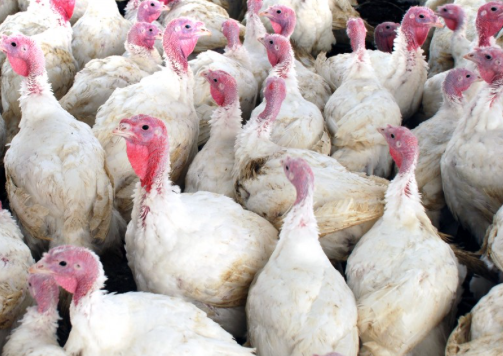 As part of routine, pre-slaughter testing and surveillance for H5/H7 Avian Influenza, H7N1 presumptive low pathogenic avian influenza (LPAI) was detected in a healthy commercial meat turkey flock in Jasper County in southwestern Missouri, based upon H7 PCR and antibody to H7 and N1; further characterization is pending virus recovery. There have been no clinical signs of illness or increased mortality on the premises.
As part of routine, pre-slaughter testing and surveillance for H5/H7 Avian Influenza, H7N1 presumptive low pathogenic avian influenza (LPAI) was detected in a healthy commercial meat turkey flock in Jasper County in southwestern Missouri, based upon H7 PCR and antibody to H7 and N1; further characterization is pending virus recovery. There have been no clinical signs of illness or increased mortality on the premises.
The event began February 26 and was confirmed March 3. This is the first detection of low-pathogenic H7 in commercial poultry in the United States for 2018.
The farm where the virus was detected houses 20,000 birds, which will be depopulated through controlled marketing, a strategy that allows poultry that are infected with or exposed to low-pathogenic H5 and H7 viruses to move to market on a limited basis, according to state response plans.
Tests are slated to further characterize the virus, based on virus isolation. The U.S. Department of Agriculture (USDA) Animal Plant Health Inspection Service (APHIS) and the Missouri Department of Agriculture are conducting an in-depth epidemiological investigation and have stepped up surveillance and testing. Two other commercial poultry farms located within 10 kilometers of the farm have tested negative for the virus.
Measures applied include: movement control inside the country; surveillance outside containment and/or protection zone; surveillance within containment and/or protection zone stamping out; quarantine; zoning; vaccination prohibited; no treatment of affected animals. No other measures are planned.
High- and Low-Path Avian Influenza Are Not The Same
Avian influenza viruses are divided into two groups—highly pathogenic (HPAI) and low-pathogenic (LPAI)—based on the ability of the virus to produce disease and the severity of the illness it can cause.
HPAI virus strains are extremely infectious, often fatal to domestic poultry, and can spread rapidly from flock-to-flock. It is a serious disease and requires a rapid, coordinated response from federal, state, local and industry partners.
LPAI occurs naturally in migratory waterfowl and shorebirds without causing illness. LPAI can occur in domestic poultry, with little or no signs of illness.
Because LPAI does not typically kill poultry the way that HPAI does, there may be additional control options beyond depopulation. However, because some LPAI strains have the potential to genetically change into HPAI, authorities may depopulate flocks infected with those strains of LPAI before they have the potential to change to HPAI and cause severe mortality. Federal and state officials determine what option(s) are available to affected producers.


